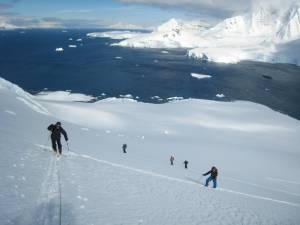McLean, VA – SnowSports Industries America (SIA) and Leisure Trends Group have released U.S. retail ski and snowboard equipment and apparel sales numbers for August-December 2012, extrapolated from data collected from the point of sale systems of more than 1,200 snow sports retailers.
December started slow in the snow sports marketplace, but the onset of true winter conditions and good snow across more than 50 percent of the country later in the month brought acceleration in sales of equipment, apparel and accessories made for cold and snowy conditions. Consumers spent more than $1 billion in the snow sports market in December alone, and sales for the season reached $2.1 billion - down four percent in units sold and down three percent in dollars sold, compared to November when sales were down eight percent in units sold and seven percent in dollars sold. The arrival of winter will continue to spur sales in the snow sports market, SIA officials estimate, and all eyes are on recovery from last season’s difficulties brought on by lack of snow across the nation.

The snow sports market had an uphill battle to fight in the pre-season as inertia from last season, recovery from Hurricane Sandy and “fiscal cliff” concerns put multiple dents in the market. Conditions in the snow sports market from late November to the end of the winter season typically depend upon current snow conditions and Mother Nature began to rev up winter conditions during the holidays. In fact, snow covered 51 percent of the lower 48 on December 25th and sales picked up accordingly.
Despite the acceleration in sales late in December, inventories continued to weigh down retailers. On December 31st, specialty shop retailers had $951 million worth of snow sports equipment, apparel and accessories in inventories, three percent higher than on Dec. 31, 2011.
Sales during the second half of the 2012-13 winter season (January to March) typically bring in approximately 35 percent more dollars into the snow sports market for equipment, apparel and accessories. Increased snowfall and lower temperatures could help retailers clear out swollen inventories and allow for a full recovery from last season’s disappointing sales and participation.
As the market picks up several trends in the market reflecting a shift toward backcountry and freeride gear are emerging. Twin tip ski sales (flat and systems combined) are up two percent in dollars sold to more than $45 million and up four percent in units sold to 101,500 pairs of skis sold through Dec. 31. Sales of alpine-oriented touring boots, alpine ski boots with a walk mode and rubber/Vibram sole designed for use with alpine touring bindings have more than doubled compared to last season. More than 41,000 alpine/AT boots were purchased between August 1 and December 31. Sales of lighter, more technical AT/Randonee boots are up 19 percent in units and 29 percent in dollars sold. Sales of climbing skins, used on the bottoms of skis to prevent backwards sliding when traversing or sliding uphill, are up 10 percent in units sold and nine percent in dollars sold. Splitboard sales, although still a small category with 2,300 units sold through December, are up 33 percent in units sold and up 19 percent in dollars sold. On the accessories side, action camera sales are soaring, up 14 percent in units to 69,500, and up 36 percent in dollars sold to $20 million.
Snow conditions will determine the fate of the snow sports market for the remainder of the season. Good snow conditions have a positive impact on participation and sales overall and expectations are for increased participation and increased sales. In fact, good conditions should bring more than 20 million U.S. residents out for snow sports this season and result in an increase over last season’s $3.3 billion in total sales.

